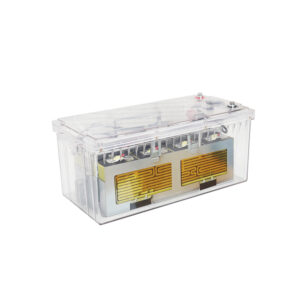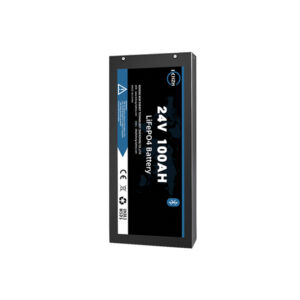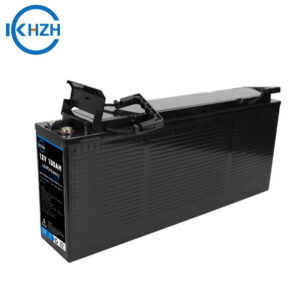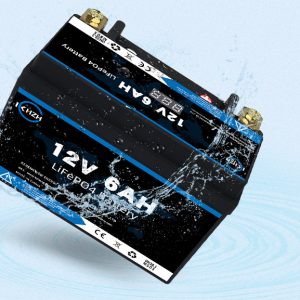Introduction to RV Inverters
Embarking on a journey with your cherished recreational vehicle (RV) is a thrill like no other. It represents freedom, adventure, and the joy of exploring the open road. Amidst the marvels of modern RV technology, one vital component often remains unseen yet plays an indispensable role in enhancing your mobile living experience – the RV inverter.
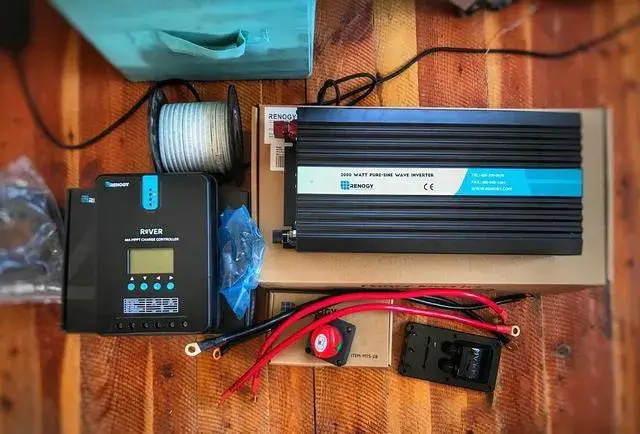
Definition of an RV Inverter
An RV inverter is a sophisticated electrical device designed to convert direct current (DC) power stored in batteries into alternating current (AC) power that mimics the electricity supplied by household outlets. This transformation enables you to run various electronic devices and appliances within your RV that typically require standard AC power sources.
Without delving too deeply into technical jargon, it suffices to understand that an RV inverter serves as a bridge between your onboard DC battery system and the multitude of AC-powered conveniences you enjoy while traveling. It empowers you to harness energy from your battery bank for operating appliances like microwaves, televisions, laptops, and more – providing a semblance of home comfort wherever you roam.
Importance of an RV Inverter for RV Owners
The significance of an RV inverter cannot be overstated for those who revel in mobile living. Picture this scenario: nestled beneath a starlit sky at a remote campsite, miles away from civilization’s trappings. Thanks to your trusty RV inverter, you can still brew that morning cup of coffee using your favorite electric kettle or charge essential gadgets without fretting over dwindling phone battery levels.
Moreover, an RV inverter ensures independence from traditional campground hookups or generator reliance, granting you unparalleled flexibility when choosing where to park your rolling abode. Whether boondocking off-grid or simply seeking respite amidst nature’s embrace, having a reliable source of converted power at your disposal elevates both convenience and comfort during every mile traveled on the winding road ahead.
Overview of RV Electrical Systems
Difference between AC and DC Power
In the realm of RV electrical systems, it is crucial to understand the distinction between alternating current (AC) and direct current (DC) power. AC power is the standard form of electricity supplied by grid-connected outlets, characterized by a continuous change in direction that enables efficient transmission over long distances.
On the other hand, DC power flows in a single direction without any fluctuations. In an RV setting, AC power is typically used for larger appliances like air conditioners and microwaves, while DC power is utilized for lighting, water pumps, and other smaller devices.
The conversion from AC to DC – and vice versa – is facilitated by inverters and converters within an RV electrical system. Inverters are responsible for converting DC power stored in batteries to AC power that can run household appliances when not connected to shore power.
Conversely, converters transform incoming AC power from shore hookups into DC power to charge batteries and operate 12-volt systems in the RV. Understanding these differences in electrical currents is essential for maintaining a balanced and functional RV electrical setup.
Role of Batteries in an RV Electrical System

Batteries serve as the lifeblood of an RV’s electrical system, providing stored energy for powering various components when off-grid or disconnected from external power sources. Deep-cycle batteries are commonly used in RVs due to their ability to discharge energy steadily over extended periods without sustaining damage compared to starting batteries meant for quick bursts of energy.
These deep-cycle batteries can be lead-acid or lithium-ion based, each offering unique advantages such as durability or lightweight design. In an RV setup, batteries work alongside inverters to ensure a consistent flow of electricity throughout the vehicle.
When plugged into shore power or running a generator, batteries receive charges through converters that replenish their energy reserves. This stored energy becomes invaluable during boondocking adventures or camping off-grid where access to traditional outlets is limited.
Proper maintenance of these batteries – including regular checks on fluid levels for lead-acid types or monitoring charging cycles for lithium-ion variants – is essential for maximizing their lifespan and preserving uninterrupted electrical functionality within the RV. Let me know if you would like me to continue with another section!
-
12V Lithium Batteries
12v 200ah Lifepo4 Battery Used In Cold Weather
-
12V Lithium Batteries
New Style 12V 100AH Slimline Lifepo4 Battery For RV Camper
-
12V Lithium Batteries
Lifepo4 Pack 12.8v 150ah Front Terminal Battery
-
12V Lithium Batteries
Custom 12V 100ah Slim lithium battery for RVS
The 12v lithium batteries (LiFePO4) made by keheng have a life expectancy of 5,000+ years and are the best choice if you want to use your caravan for the next 10-15 years without the battery affecting your caravan.
Benefits: High energy density, long cycle life, low self-discharge, 95% DO Dec.
Conversion of DC Power to AC Power
One of the fundamental functions of an RV inverter is to convert the direct current (DC) power stored in the batteries into alternating current (AC) power that can be used to operate various electronic devices and appliances inside the RV. DC power, which is commonly produced by batteries or solar panels, flows in one direction and is suitable for powering low-voltage devices such as lights and fans. However, most household appliances and electronics require AC power to function efficiently.
Through a process known as inversion, an RV inverter transforms the DC power into AC power, providing a seamless transition for RV owners who need to power their microwave ovens, televisions, laptops, and other gadgets while on the road or camping off-grid. This conversion process involves changing the frequency and voltage levels of the electrical current to match standard utility grid specifications.
As a result, RV enthusiasts can enjoy the comforts of modern technology wherever their travels take them. Furthermore, inverters play a crucial role in maintaining a steady supply of electricity within the RV’s onboard electrical system.
By converting DC power to AC power with precision and efficiency, inverters ensure that all connected devices receive a consistent flow of electricity without fluctuations or interruptions. This reliability is essential for powering sensitive electronics that may be susceptible to damage from irregular voltage levels or frequency variations.
Types of Inverters: Modified Sine Wave vs Pure Sine Wave Inverters
When exploring the world of RV inverters, one encounters two primary types: modified sine wave inverters and pure sine wave inverters. Each type offers distinct advantages and considerations depending on the specific needs and preferences of RV owners. Modified sine wave inverters are cost-effective solutions that provide basic AC power output suitable for running most common household appliances.
While they are efficient for powering standard devices like lamps or refrigerators, modified sine wave inverters may not be compatible with more sensitive equipment such as certain electronic gadgets or medical devices that require precise waveform integrity. In contrast, pure sine wave inverters deliver high-quality AC power output that replicates grid electricity with exceptional accuracy.
These inverters produce a smooth sine wave pattern similar to what you would receive from a typical wall outlet at home. As a result, pure sine wave inverters are considered ideal for running sophisticated electronics like computers, televisions, audio systems, and equipment with microprocessors that demand clean energy sources for optimal performance.
Powering Household Appliances on the Go

Embarking on a road trip or camping adventure in your RV doesn’t mean sacrificing the comforts of home. Thanks to the versatile functionality of an RV inverter, you can power essential household appliances on the go with ease.
Imagine being able to brew a fresh cup of coffee using your favorite coffee maker, heat up some leftovers in a microwave, or even run a small air conditioner during hot summer days – all powered by your trusty RV inverter. This convenience not only enhances the overall camping experience but also adds a sense of familiarity and comfort that can make your journey truly unforgettable.
Moreover, having the ability to power household appliances on the go with an RV inverter opens up a world of culinary possibilities. You can whip up delicious meals using appliances like toaster ovens, blenders, or electric grills without being limited by traditional camping cooking equipment.
Whether you’re a seasoned chef looking to create gourmet dishes or simply craving a warm meal while exploring the great outdoors, having access to these appliances can elevate your dining experience and transform ordinary meals into memorable feasts. In addition to enhancing convenience and comfort, powering household appliances on the go with an RV inverter also promotes sustainability and self-sufficiency.
By reducing reliance on disposable items like single-use cutlery or pre-packaged meals, you can minimize waste production and lower your environmental impact while enjoying the freedom to cook and consume food according to your preferences. This eco-friendly approach aligns with modern trends towards sustainable living and allows you to embrace a more conscious lifestyle even while traveling in your RV.
Charging Electronic Devices While Camping Off-Grid
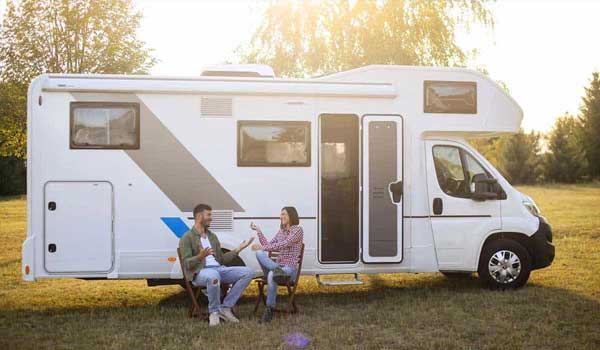
In today’s digitally connected world, staying off-grid doesn’t have to mean disconnecting from the online realm. With an RV inverter at your disposal, you can easily keep electronic devices charged and operational while camping off-grid – ensuring that you stay connected with loved ones, access important information when needed, and capture unforgettable moments through photos or videos without worrying about running out of battery power. This seamless integration of technology into outdoor adventures allows you to strike a balance between embracing nature’s serenity and staying connected with the digital world.
Furthermore, charging electronic devices while camping off-grid opens up endless opportunities for entertainment and relaxation during downtime. Whether you enjoy reading e-books on your tablet, listening to music via Bluetooth speakers, watching movies on a laptop screen under starlit skies, or pursuing creative endeavors through digital art applications – having fully charged devices at your disposal ensures that you can immerse yourself in activities that bring joy, inspiration, and personal fulfillment wherever your travels take you.
Beyond personal entertainment and connectivity benefits, charging electronic devices while camping off-grid also enhances safety and security during outdoor adventures. By ensuring that communication devices like smartphones remain powered up at all times, you have access to emergency services if needed and can quickly seek assistance in unforeseen circumstances such as medical emergencies or vehicle breakdowns – providing peace of mind for both yourself and your travel companions as you explore remote destinations off-grid.
Proper Installation Techniques
When it comes to installing an RV inverter, proper technique is crucial to ensure optimal performance and safety. One key consideration is the location of the inverter within the RV.
Ideally, the inverter should be installed in a well-ventilated area to prevent overheating and allow for adequate airflow. It’s important to mount the inverter securely to prevent any movement while the vehicle is in motion, reducing the risk of damage or electrical issues.
In addition to location, wiring requirements play a significant role in the installation process. It’s essential to use high-quality, appropriately sized cables that can handle the power load of the inverter.
Properly securing and routing the wiring not only ensures efficient power transfer but also reduces the risk of accidental damage or short circuits. Following manufacturer guidelines and consulting with a professional if needed can help ensure that the wiring meets safety standards.
Maintenance Guidelines
To keep your RV inverter running smoothly, regular maintenance is essential. One common issue to watch out for is overheating, which can be caused by factors such as inadequate ventilation or overloading the inverter with too many appliances.
Regularly checking for signs of overheating, such as unusual odors or excessive heat coming from the unit, can help prevent potential malfunctions or damage. In addition to monitoring for overheating issues, regular inspection and cleaning procedures are crucial maintenance tasks for RV inverters.
Dust and debris buildup can impede airflow and cause inefficiencies in operation. Periodically inspecting and cleaning both the exterior and interior components of the inverter can help prolong its lifespan and ensure optimal performance when you need it most.
Expert Recommendations on Choosing the Right RV Inverter
Calculating power needs based on appliances used in the RV
When selecting an RV inverter, it is crucial to begin by assessing the power requirements of the various appliances you intend to use. Start by creating a comprehensive list of all the electronics and devices you plan to power with your inverter. Consider factors such as wattage ratings, start-up surges, and average daily usage times for each appliance.
By calculating the total wattage needed to run all your devices simultaneously or intermittently, you can determine the minimum power capacity your RV inverter should have to meet your energy demands efficiently. Additionally, it is essential to account for any future additions or upgrades to your RV’s electrical system when estimating power needs.
Anticipating potential increases in energy consumption will help ensure that your chosen RV inverter can accommodate any changes without requiring immediate replacement or upgrades. By meticulously analyzing your appliance usage patterns and electricity requirements, you can make an informed decision when selecting an appropriate RV inverter that aligns perfectly with your specific power needs.
Selecting the appropriate size and type of inverter for specific needs
Choosing the right size and type of RV inverter is a critical step towards maximizing energy efficiency and ensuring seamless operation while on the road. Size selection involves determining the power capacity (measured in watts) required to support all connected devices simultaneously without overloading the system. It’s advisable to opt for an inverter with slightly higher wattage than calculated during the power needs assessment stage to allow for potential surges and fluctuations while maintaining optimal performance.
Furthermore, considering whether a modified sine wave or pure sine wave inverter best suits your requirements is paramount. Pure sine wave inverters are ideal for sensitive electronics such as laptops, cameras, or medical equipment due to their ability to produce clean and stable AC power similar to grid electricity.
On the other hand, modified sine wave inverters are more cost-effective but may not be suitable for certain appliances that demand high-quality AC output. Selecting an RV inverter that matches both your wattage requirements and waveform preferences ensures efficient operation and longevity of your electrical equipment during travel adventures.
Input and Output Voltage
Understanding the input and output voltage is also incredibly important for the choice of inverter, the input voltage and output voltage need to be matched with the equipment, basically all RVs use 12V lithium battery packs, then you need to input the rated voltage of the inverter as 12V to ensure the normal charging of the battery, but for the discharging, you need to discharge with 120V or 220V utility power, then a good inverter is a big focus of your choice!
Difference between RV inverter and RV converter
RV inverters and RV converters are both important parts of a Recreational Vehicle (RV) electrical system, but they have different functions and work differently.
RV Inverter: The main function of an inverter is to convert direct current (DC) to alternating current (AC). In an RV, the battery provides DC power, but many devices (such as TVs, microwaves, computers, etc.) require AC power to work. This is where an inverter is needed to convert DC to AC. Inverters are typically used when the batteries are fully charged and the RV is not accessible to grid power (e.g., in a non-campground environment).
RV Converter: The main function of the converter is to convert alternating current (AC) to direct current (DC). When the RV is connected to grid power (e.g., in a campground environment), the power supply is usually AC, but the lithium RV battery system and certain equipment (e.g., lights, cooling system, etc.) require DC power to operate. This is where a converter is needed to convert the AC power to DC power, and the converter will also charge the RV’s battery.
Inverters and converters play complementary roles in the RV’s power system, ensuring that the RV’s power system can adapt to different power and equipment needs.
Solar Power Integration with RV Inverters
How solar panels can complement an RV inverter system
Harnessing the power of the sun through solar panels is a game-changer for RV owners seeking a sustainable and cost-effective energy solution. When integrated with an RV inverter system, solar panels serve as a renewable source of electricity that can significantly reduce reliance on traditional power sources.
Solar panels capture sunlight and convert it into direct current (DC) electricity, which can then be fed into the RV’s battery bank via a charge controller. This DC power stored in the batteries can then be inverted by the RV inverter to generate alternating current (AC) power for running appliances and devices inside the vehicle.
By incorporating solar panels into their setup, RV enthusiasts can enjoy greater independence and efficiency in powering their adventures on the road. Embracing solar power integration offers numerous benefits to RV owners looking to enhance their travel experience.
One key advantage is the ability to camp off-grid for extended periods without worrying about depleting battery reserves. Solar panels continuously recharge the batteries during daylight hours, ensuring a steady supply of electricity for essential devices like lights, refrigerators, and entertainment systems.
This sustainable energy solution not only reduces reliance on noisy generators but also minimizes carbon emissions, making it an eco-friendly choice for environmentally conscious travelers. Additionally, utilizing solar power helps lower long-term operational costs by decreasing reliance on fuel-powered generators or electrical hookups at campsites.
Benefits of using solar power to charge batteries connected to inverters
The synergy between solar power and RV inverters extends beyond mere convenience – it represents a shift towards self-sufficiency and resilience on the road. By leveraging solar energy to charge batteries connected to inverters, RV enthusiasts can unlock a myriad of practical benefits that enhance their overall camping experience. Solar charging minimizes dependence on external power sources, offering peace of mind during remote excursions where access to conventional electricity may be limited or unavailable altogether.
This increased autonomy empowers travelers to explore off-the-beaten-path destinations without sacrificing modern comforts or essential amenities. Furthermore, using solar power to charge batteries not only prolongs battery life but also ensures a consistent supply of clean energy for powering household appliances and electronic devices onboard an RV.
Unlike traditional charging methods that may strain battery longevity due to overcharging or undercharging issues, solar charging optimizes battery health by delivering a steady flow of energy tailored to meet specific consumption needs. In this way, integrating solar technology with inverters promotes efficient energy management practices that contribute to both environmental sustainability and personal convenience while traversing diverse landscapes.
Safety Precautions with Using an RV Inverter
The Importance of Grounding Your System Properly
Proper grounding of your RV inverter system is crucial to ensure the safety of both your electrical appliances and yourself. By grounding the system, you are creating a path for excess electricity to safely dissipate into the ground in case of a power surge or short circuit.
This helps prevent electric shocks, fires, and damage to your equipment. To ground your system effectively, it is recommended to consult a professional electrician who can ensure that all components are correctly connected to the grounding rod or another appropriate grounding method.
Avoiding Overloading Circuits to Prevent Damage
One common mistake that RV owners make when using inverters is overloading circuits, which can lead to overheating, tripped breakers, and even electrical fires. It’s essential to understand the power limitations of your RV inverter and not exceed its capacity by connecting too many high-wattage appliances simultaneously.
Distributing the load evenly across different circuits and using power management strategies can help prevent overloads. Additionally, regularly checking for signs of overheating or unusual noises coming from the inverter can alert you to potential issues before they escalate.
Conclusion
While RV inverters provide convenience and flexibility for powering electronics on the go, it is equally important to prioritize safety when using these devices. By following proper grounding techniques and avoiding circuit overloads, RV owners can enjoy a reliable power supply without compromising their safety or damaging their equipment.
Remember that with a little caution and awareness, utilizing an RV inverter can elevate your travel experience by bringing modern comforts wherever you roam. Stay safe, stay informed, and let your adventures be powered by peace of mind!

